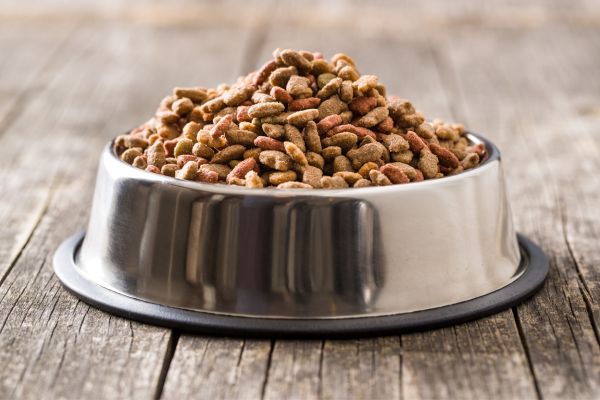In recent years, pet owners have become increasingly conscious about their furry companions’ health and well-being. Among the various dietary trends gaining momentum, the raw food diet for dogs has emerged as a popular choice. Advocates claim it mirrors the ancestral eating habits of wild canines and provides a wealth of benefits for modern pets. But is this feeding approach truly the best option for your dog? In this comprehensive guide, we delve into everything you need to know about the raw food diet for dogs, from its potential advantages to key considerations for pet parents.
Understanding the Raw Food Diet for Dogs
The raw food diet for dogs, often referred to as the “BARF” diet—an acronym for Bones and Raw Food or Biologically Appropriate Raw Food—focuses on feeding dogs uncooked meat, bones, organs, and sometimes raw fruits and vegetables. Proponents of this diet believe it closely resembles what dogs’ wild ancestors consumed before domestication.
This dietary approach typically consists of raw muscle meat, whole or ground bones, organ meats such as liver and kidneys, and small amounts of fresh produce. The idea is to provide a balanced and natural way of eating that aligns with the canine digestive system, which evolved over thousands of years to process raw animal protein and fat efficiently.
Potential Benefits of a Raw Food Diet for Dogs
Supporters of the raw food diet for dogs often cite numerous benefits they observe in their pets. One of the most commonly reported advantages is improved coat health. Dogs on raw diets frequently develop shinier, softer fur, likely due to the high levels of natural fats and oils present in raw meat.
Dental health is another area where pet owners notice significant improvements. Chewing raw bones can help reduce tartar buildup and keep teeth cleaner compared to traditional kibble. Additionally, many report that their dogs have healthier skin, reduced allergy symptoms, and increased energy levels.
Digestive health may also benefit from this feeding approach. Raw diets often result in smaller, firmer stools since the food is more digestible and produces less waste. Moreover, some owners find their dogs exhibit fewer gastrointestinal issues, such as gas and bloating, after switching to raw feeding.
Concerns and Risks Associated with Raw Feeding
While the raw food diet for dogs has its share of enthusiasts, it is not without controversy. Veterinarians and pet nutrition experts often caution about the potential risks involved. One of the most significant concerns is bacterial contamination. Raw meat can harbor harmful pathogens like Salmonella and E. coli, which pose health risks not only to dogs but also to humans handling the food.
Another critical issue is ensuring proper nutritional balance. Dogs require precise amounts of essential nutrients, and a poorly planned raw diet may lead to deficiencies or imbalances. For example, an excess of phosphorus from too many bones or a lack of calcium can cause serious skeletal issues, especially in growing puppies.
There is also a choking hazard associated with feeding whole bones. While chewing bones can benefit dental health, they can also splinter and cause internal injuries or obstructions. Pet owners must exercise extreme caution and consult experts when incorporating bones into their dog’s meals.
How to Transition Your Dog to a Raw Food Diet Safely
If you’re considering transitioning your dog to a raw food diet, it’s essential to do so gradually and with careful planning. Sudden dietary changes can upset your pet’s digestive system, leading to diarrhea or vomiting. A slow introduction of raw food alongside their regular diet allows their body to adjust smoothly.
Consulting with a veterinarian or a pet nutritionist experienced in raw feeding is highly recommended. They can help formulate a balanced meal plan tailored to your dog’s age, breed, size, and activity level. A proper transition plan can minimize health risks and ensure your dog receives all necessary nutrients.
Raw Food Diet for Dogs: Homemade vs. Commercial Options
Pet owners have the choice between preparing raw meals at home or purchasing pre-packaged commercial raw diets. Homemade raw diets offer complete control over ingredients and quality. However, they demand extensive knowledge of canine nutrition to prevent deficiencies or excesses.
Commercial raw diets, on the other hand, are formulated to meet established nutritional standards. These products often undergo safety processes such as high-pressure pasteurization to reduce bacterial contamination while maintaining the raw food’s integrity. For many owners, commercial options provide a convenient and safer way to feed raw without compromising their pet’s health.
Is the Raw Food Diet for Dogs Right for Your Pet?
Deciding whether the raw food diet for dogs is suitable for your furry friend requires careful consideration. Factors such as your dog’s age, existing health conditions, and lifestyle all play a role. Puppies, senior dogs, and those with compromised immune systems may be more vulnerable to the risks associated with raw feeding.
It is also essential to consider your own ability to handle and store raw meat safely. Maintaining rigorous hygiene practices is critical to protect both your household and your dog from potential bacterial infections.
Final Thoughts on the Raw Food Diet for Dogs
The raw food diet for dogs continues to be a topic of passionate debate among pet owners and professionals alike. While many believe it offers a more natural and healthier way of feeding, others caution about its potential dangers if not implemented correctly.
Ultimately, the decision to adopt a raw diet should be made with guidance from veterinary professionals and a thorough understanding of your dog’s unique nutritional needs. For some pets, raw feeding may unlock visible health benefits and enhanced vitality. For others, a high-quality commercial dog food or a cooked homemade diet may provide a safer and equally nourishing alternative.
As a responsible pet parent, your primary goal is ensuring your dog thrives with a balanced, safe, and enjoyable diet—whether raw or otherwise.



